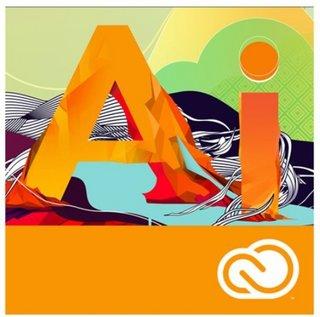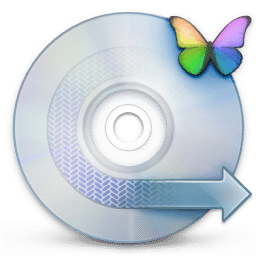Most Commented
No Code Website Chatbots Using Dialogflow Es




Description material

No Code Website Chatbots Using Dialogflow Es
Published 11/2024
MP4 | Video: h264, 1920x1080 | Audio: AAC, 44.1 KHz
Language: English | Size: 1.43 GB | Duration: 3h 24m
Learn how to use the Dialogflow ES Messenger integration to build a free website chatbot
What you'll learn
How to add a chatbot to your website using Dialogflow Messenger ES
Learn the basics of Dialogflow ES
Dialogflow ES conversation design
How to design a flowchart and translate that flowchart into a working Dialogflow bot
Requirements
Basic technical skills - e.g. ability to work with an Excel spreadsheet
Description
In 2024/2025, there are FAR BETTER choices for building chatbots, including Dialogflow CX (you can check out my CX course to learn about the topic) and of course Large Language Models like GPT and Gemini. Here are a few reasons to still use Dialogflow ES in 2024/2025:- you need to add a chatbot to your website for free- you are looking to learn the basics of chatbot development. In my opinion, Dialogflow ES still provides the best balance between power and ease of use for non-programmers trying to build chatbots - you want to build a quick prototype just to test out some ideas before you move on to using more powerful chatbot building toolsWhat you should know before you build your ES botIn my work as a Dialogflow ES consultant, I noticed that my clients would make the same kinds of mistakes repeatedly and end up with chatbots which could easily go into a bad state. I designed something called the "explicative approach" to building ES bots, which would help people avoid these kinds of mistakes. - avoid using the slot filling feature- use an output context lifespan of 1 so you can have better control over your conversation design- simulate session variables if you wish to keep user input in memory over a longer conversation- do not overuse the wildcard entity- do as much work as possible without calling a webhook. In other words allow Dialogflow to handle as much of the NLU as possible- and a few more suggestionsIn this course I explain how to combine all these ideas to build basic Dialogflow ES Messenger chatbots.
Overview
Section 1: Introduction
Lecture 1 Introduction
Lecture 2 Intents
Lecture 3 Entities
Lecture 4 Contexts
Lecture 5 Integrations
Section 2: Embed Dialogflow ES Messenger into your website
Lecture 6 Embed chatbot into your website
Lecture 7 Have your bot initiate the conversation
Lecture 8 Multiple messages per conversation turn
Section 3: HTML and CSS customizations
Lecture 9 HTML Customizations - Required Attributes
Lecture 10 HTML customizations - optional attributes
Lecture 11 Intent Attribute
Lecture 12 Intent Attribute Scenarios
Lecture 13 Session ID Attribute Part 1
Lecture 14 Session ID Attribute Part 2
Lecture 15 User ID Attribute
Lecture 16 CSS customizations
Section 4: Rich responses
Lecture 17 Description Type
Lecture 18 Info Type
Lecture 19 Button Type
Lecture 20 Image Type
Lecture 21 Suggestion Chip Type
Lecture 22 List Type
Lecture 23 Accordion Type
Section 5: Python Webhook
Lecture 24 Python Webhook Tutorial
Lecture 25 Understanding the Custom Payload Part 1
Lecture 26 Understanding the Custom Payload Part 2
Lecture 27 Understanding the Custom Payload Part 3
Lecture 28 Trigger the static response
Lecture 29 Get response object from history
Lecture 30 Send rich response from webhook
Section 6: Selection triggers next intent
Lecture 31 Flowchart
Lecture 32 Building the bot
Section 7: Decision Tree Bot
Lecture 33 Decision Tree Demo
Lecture 34 Flowchart
Lecture 35 Building the bot
Section 8: Checklist Bot
Lecture 36 Checklist Bot Demo
Lecture 37 Flowchart
Lecture 38 Building the bot
Section 9: Interactive Learning Bot
Lecture 39 Interactive Learning Bot Demo
Lecture 40 Flowchart
Lecture 41 Building the bot
Non-programmers who want to add a simple AI powered chatbot to their website

Join to our telegram Group
Information
Users of Guests are not allowed to comment this publication.
Users of Guests are not allowed to comment this publication.
Choose Site Language
Recommended news
Commented



![eM Client Pro 9.2.1735 Multilingual [Updated]](https://pikky.net/medium/wXgc.png)





![[PORTABLE] Allavsoft Video Downloader Converter 3.24.9.8248 Multilingual](https://i.postimg.cc/h4XMhHkZ/Allavsoft-Video-Downloader-Converter.png)
![Movavi Video Editor 24.0.2.0 Multilingual [ Updated]](https://pikky.net/medium/qhrc.png)

